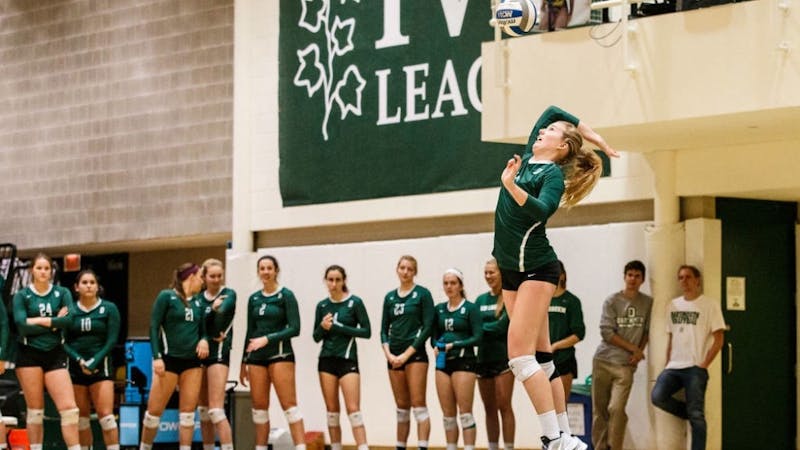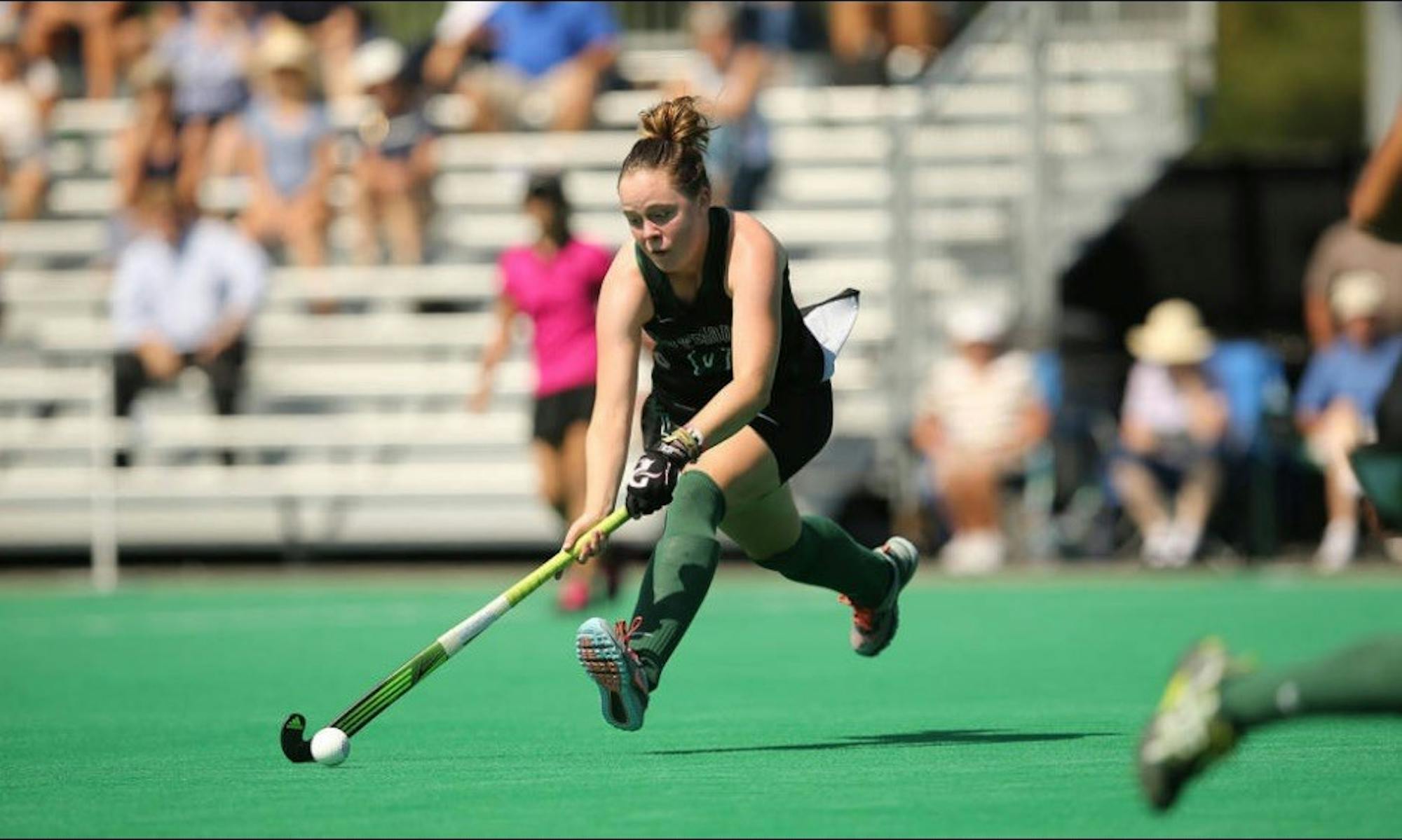They’ve made it. More than a decade of practice, games, tournaments and tryouts, and they have made it. Entering the fabled interior of Floren Varsity House, donning fresh Dartmouth Peak Performance gear, each is now a collegiate athlete — Division I — with four seasons stretching before them. But the years of practice necessary to be recruited take a considerable toll on athletes’ bodies. Once at Dartmouth, the intensity with which they compete sometimes leads to new physical trauma. Injury — a looming threat for any student athlete — can have far-reaching impacts on all facets of student life. Though perhaps not all is as bleak as it might seem.
Patrick Murphy ’21, a soccer player who has not played since arriving at Dartmouth due to an overuse knee injury, spoke of his commitment to the game that has driven his efforts toward recovery.
“My initial diagnosis was actually four to six weeks, which is crazy,” said Murphy.
Crazy indeed. Murphy hasn’t played in eight months. Recovery, as Murphy found, is often uncertain, with setbacks and even the emergence of new, correlated injuries.
“The issue with the injury is there’s no quick fix and the MRI doesn’t always show what’s wrong with it,” Murphy said.
Although Murphy has now begun to see progress as he works with a new trainer, he emphasized how hard it was to see no improvement during months of rigorous physical therapy.
Overuse injuries plague volleyball player Sierra Lyle ’19 as well. After receiving hip surgery to repair multiple tears in her hip at the end of her freshman year, Lyle’s attempts at a quick fix backfired. After receiving an unsuccessful cortisone shot her sophomore spring, Lyle underwent other tests that revealed she was missing the majority of the cartilage in her hip. This, she later learned, was caused by having pushed herself too strenuously with the aim of quickly returning to the court.
“It’s hard to tell myself to stop, and it’s hard for me to listen to my body because I want to, you know, go to the next step and be playing any minute,” Lyle said. “It’s also tough for me to tell what’s too much, what’s not enough, because there’s just a fine line because you want to be moving and stuff.”
Anna Ewasechko ’18 initially had little conception of how debilitated she would be following a concussion sustained during a field hockey game halfway through her junior season. She certainly didn’t believe it would end her field hockey career. Though she ultimately stayed on the team because of her commitment to team members and her role as assistant captain, Ewasechko experienced severe symptoms for approximately ten months, rendering her not only unable to play, but unable to be in loud, highly stimulating areas. In the year-or-so following her injury, Ewasechko’s extroverted nature was tested.
“I love being with people and hanging out, and even like being in places that are busy and stuff like that,” Ewasechko said. “I couldn’t do any of that. I had to be super secluded.”
While it is difficult to consider any aspect of such an incapacitating concussion a “blessing,” Ewasechko ultimately came to appreciate opportunities afforded by the extra time she had without field hockey.
“I got so close with my friends and was able to do things like, I don’t know, just like enjoy a slower pace of Dartmouth, which I feel like people take for granted a lot,” Ewasechko said. “It’s so nice to just be able to lay out on the Green or hang out with friends or just maybe take a little bit extra longer time studying or doing an assignment, like letting yourself go for more KAF breaks.”
While not playing field hockey was a significant change and a sad one, Ewasechko gained an appreciation for aspects of the Dartmouth experience that hadn’t been compatible with an athletic schedule hardly allowing enough time to work or sleep.
Though frustrating and painful, injuries might be the sort of strength-testing experiences that prompt introspection, especially in the longer-term.
“It has developed this gratefulness in me,” Ewasechko said. “It’s so funny thinking now like, I took grocery shopping for granted, or talking to more than two people at a time and following a conversation or not getting anxious in class. I feel like I just have an even more positive outlook on life for sure.”
Lyle also came to recognize new aspects of herself as she dealt with injury.
“I learned so many lessons about myself,” Lyle said. “I’m the biggest people-pleaser. Basically, I was trying to please everyone but my own body and my own self. I had to scrap everything and just be like, ‘Dude, it’s your life, it’s your body, you need to just focus on making yourself better and not doing everything for everyone else.’”
Lyle ultimately understood how her injury, despite the frustrating uncertainty and physical toll, led her to be a healthier person.
“[My injury] has made me really recognize what I’m putting in my body, what I’m doing to my body, and [has made me] more self-aware,” Lyle said.
Murphy’s soccer overuse injury has also prompted him to adopt healthier habits.
“I changed my lifestyle,” Murphy said. “I changed my diet. I started stretching more.”
Though he will likely return to the field this fall, Murphy’s lifestyle changes will continue to benefit his broader wellbeing.
Considering that college is a time in which identities are shaped, perhaps an injury has the potential to do just that — to allow athletes to invest more deeply in other pursuits.
“My identity totally shifted,” Ewasechko said. “It’s hilarious talking to people who knew me freshman year because I was so about field hockey, and I remember talking to one of my teammates being like, ‘Ugh I hate off days, like what are we supposed to do … I’m so bored.’”
For Ewasechko, her sport is still “obviously a part of [her] identity,” as shown by her Nike backpack, a remnant from her field hockey days.
“But it’s not the only thing,” she said. “I feel like I can be identified by other things as well now.”
Perhaps in the void left by a sports team, whether temporary or permanent, opportunities can arise for athletes to invest in a new club, make friends outside of their team, indulge in that extra KAF trip or even develop a better understanding of themselves.




